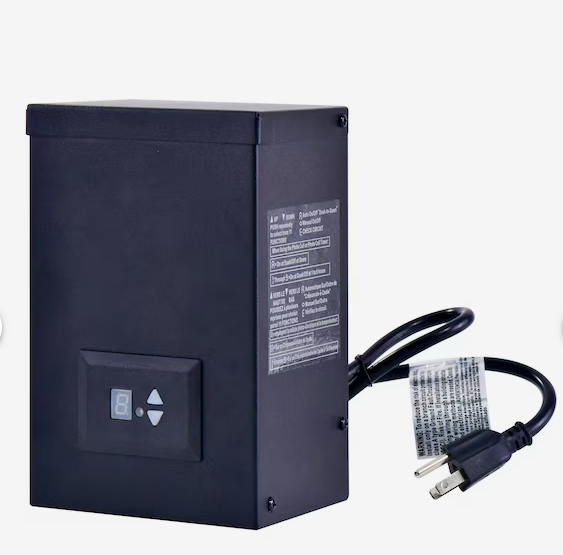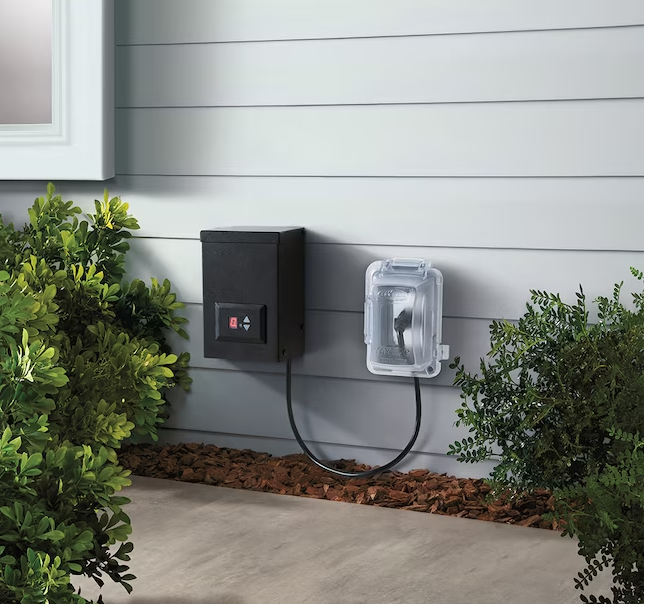

What is a low voltage transformer?
A low voltage transformer is at the heart of every landscape lighting system. It converts 120 volt current to a low voltage current (between 12-15 VAC). The efficiency of this conversion determines how well the transformer controls the voltage output and how much energy is consumed in the process. VOLT® transformers are the most efficient multi-tap low voltage transformers in the industry, providing high performance and energy savings. With high-quality toroidal cores as well as robust wiring and internal components, these transformers provide a highly stable source of current with very low energy consumption.
What are the different types of low voltage transformers?
Magnetic transformers use two coils to reduce the voltage from 120 volt down to 12 volts. The primary coil carries the line voltage (108V to 132V). The flow of electricity through the primary coil induces a magnetic field that creates a current in the secondary coil. Since the secondary coil has 1/10th the number of windings, it creates a current with 1/10th the voltage. There are two types of magnetic landscape lighting transformers. These vary by the type of core:
- Laminated/stacked cores (also know as EI type). Laminated or stacked windings have sheets wrapped in copper wire that are then stacked or laminated together to make a core. This is the more common, less expensive method for manufacturing a core. These are less efficient, run hotter and are noisier than toroidal cores.
- Toroidal cores. These are one solid unit shaped like a donut and have the windings wrapped around the donut, in and out of the donut hole. Toroidal cores are more efficient, experience less buzz and run cooler but are more expensive to make. Lighting systems with relatively high loads – such as 10 or more fixtures – benefit the most from toroidal cores. VOLT® toroidal cores are more energy-efficient, quieter and cooler than EI laminated-types. This is especially important for larger capacity transformers.
Electronic transformers convert the 120-volt current to 12 volts by first increasing the frequency of the current from 60 Hz to as high as 20,000 Hz. The increased frequency allows the use of a miniature core enabling the transformer to be very small, light and inexpensive. The biggest downsides are (1) their high-frequency current may not be compatible with LED circuits, (2) these currents also suffer from extensive voltage loss compared to magnetic types, (3) a 12-volt electronic transformer must be positioned within about 10 feet of the fixture and (4) electronic transformers are subject to overheating and premature failure.
How many lights can you put on a low voltage transformer?
It depends on the total wattage of your lights and the maximum draw of your transformer. We recommend not exceeding 80% of the transformer’s capacity.
Free Lighting Design Consultation
We offer a free design consultation to our clients. We will first listen to your ideas of what you would like in your lighting portrait. We will ask:
- What are your main vantage points? (Where do you see the yard from?)
- Are there certain paths or steps you would like to navigate at night?
- What elements are most important to you in your landscape?
We will discuss the perspectives from which you see the yard and how you use the space. We will discuss various landscape lighting design concepts.
We should have a brief discussion about your budget.
We will then take panoramic photos and use these, in conjunction with our notes from our conversations to create a design that will best meet your needs. Depending on the size and scope of your project, design times can vary
We will provide you with a detailed proposal covering the specific areas illuminated and equipment included with a specific price. I’ll also bring my spreadsheet so we can use it together to fine tune the proposal to best meet your needs.










